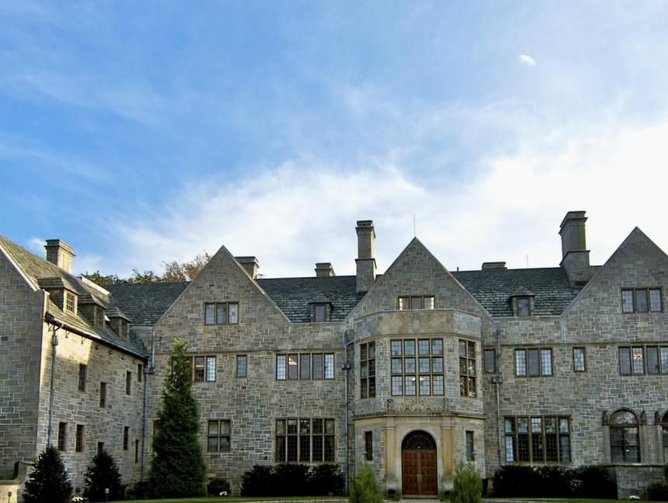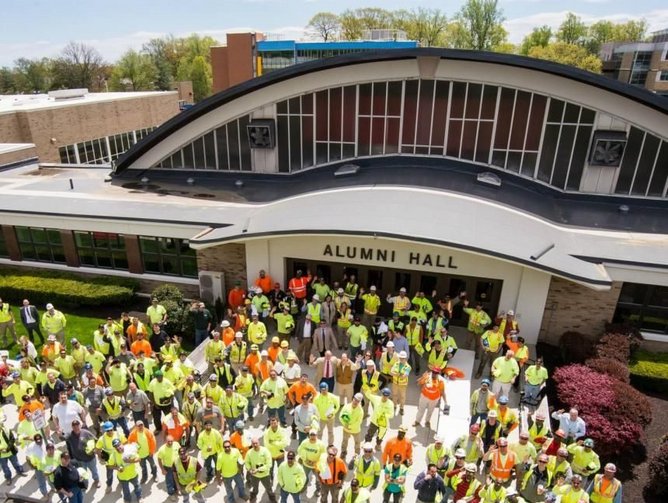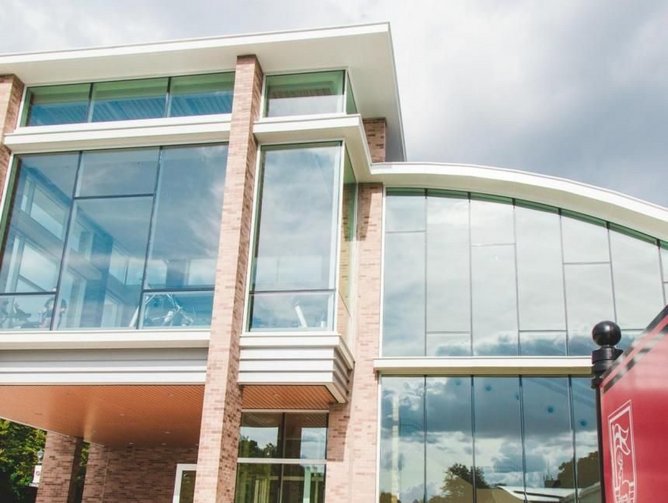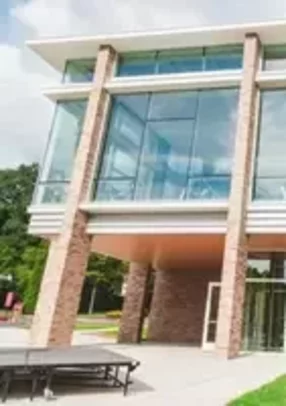How Fairfield University is building for the future with several multimillion dollar construction projects
Fairfield University in Fairfield, Connecticut, is dedicated to keeping itself fresh, innovative, and relevant; as a result, it is consistently a top tier choice for over 4,000 undergrads and their families per year.
Fairfield is currently undergoing over $85.5 million in campus renovations, including a $12 million lacrosse pitch, a $22 million recreation complex, a $60 million residential building program, construction of a parking garage, a student center expansion, and the completion of the $31 million Center for Nursing and Health Studies, as well as an expansion to Fairfield Preparatory School.
David Frassinelli, Associate Vice President for Facilities at the university, leads the innovative construction projects. He has spent his career in construction, having worked for Gilbane Building Company for 12 years before joining the Fairfield team. As he explains, the projects are part of the University’s strategic plan.
“Our strategic plan explores how Fairfield University is going to be sustainable from a financial perspective on a long-term basis,” says Frassinelli. “We are focused on the future of Fairfield, where we’re going, and how we maintain sustainability financially with the challenges of the private education market. The plan includes growth and undergrad enrollment, which begs the question: where do they eat, sleep, park, and learn? That informs our master plan to talk about the facilities needs we currently have and need.”
Hence taking on multiple construction projects at once. The Rafferty Stadium lacrosse and athletic field is the beneficiary of a major donor; a project fitting the now nationally ranked teams. One of the goals of the Leslie C. Quick, Jr. Recreation Complex renovation was to promote the campus’ health and fitness concentration, which extends their Jesuit education dedication to mind, body, and spirit.
“One project that’s approaching completion is the $31 million Center for Nursing and Health Studies building, which has been a bright star on the horizon, and is not necessarily limited to nursing,” Frassinelli says. “It’s about health studies in general, and we see overlap with our Dolan School of Business and School of Engineering,” says Frassinelli. “For example, the Dolan School offers a Masters in Public Administration, so you can take some business classes and some health studies classes and come out with a multidimensional degree. Like most universities, we’re seeing a general increase in interest in the sciences, so we believe, in terms of academics, that we need to make an investment in those facilities.”
As part of the school’s strategic plan, Fairfield began working on some projects this year to align with its 75th anniversary; it is important to Frassinelli that any additions are for the benefit of the student experience, as has been one of the main goals since the school’s founding in 1942.
“There is a large amount of construction, but we found that we often have our best enrollment years when we are doing major building programs because it really speaks of a university that is thriving and growing,” he says. “It’s rare you’ll see this level of capital investment that is not only aimed at taking on more students, but also of improving the experience for enrollments we’ve consistently maintained.
“It’s common to have competition with other schools, but what do the students actually look at on a college tour? Image is a factor in deciding to attend a school, and it’s important to continue to be a leader in modernizing college campuses, as Fairfield does.”
Of course, priorities for students often go beyond the facilities available to them. Sustainability is an ever-evolving importance in deciding which college to attend, and Fairfield dedicates itself to address those needs with their continuous projects to be greener. Frassinelli chairs the sustainability committee for Fairfield, helping it to achieve local and national awards, including the EPA’s Energy Star Award for its 4.6 megawatt cogeneration facility. The University even ended up on the Sierra Club’s list of “cool schools” for its sustainability efforts.
“We typically design and build to the LEED silver standard, but we don’t necessarily pursue LEED certification,” Frassinelli explains. “We invest money associated with their certification back into our projects. For the parking garage, all the lighting is LED and one side of it has green screens growing up the side. One thing that’s unique about our university is that the heating and cooling of our central campus is handled by a combined heat and power cogeneration facility, so we are producing electricity and heat at very efficient rates. The buildings are also well insulated, and our school of nursing has some passive solar components in the form of baguettes – these are all very positive steps,” he adds.
Fairfield collaborates with a group of architects for design of these projects. Frassinelli and his team took a lean approach to incorporating what was needed, bringing architects in early to ensure that necessities were met. Fairfield has the flexibility as a private institute to pre-qualify subcontractors for construction, but it does hold open and competitive bidding. The University’s ultimate goal is to create an attractive campus – not just for the students, but for contractors.
“We have meetings with the subcontractors, and I encourage them to continue to do their best and how important their hard work is to the University, both esthetically and financially,” says Frassinelli. “If they work efficiently and safely, we make decisions quickly and pay quickly.
“The payback for the University is that if a subcontractor is shown four jobs and can pick one, they pick Fairfield University. I’ve received a lot of feedback from subcontractors to say they really do enjoy working here, and from one project to the next they’re bidding aggressively to stay on campus. That, to me, is an indication we’re doing something right.”
Fairfield recently held an event during National Safety Week while four construction sites were active. Construction managers and trades were invited to have lunch and see a motivational speaker. 250 tradespeople arrived, signifying the popularity of the university within the industry.
“We talked to them about how the university feels very strongly that everybody needs to go home in the same condition they came to work,” Frassinelli explains. “The event also provided the university with a forum to say ‘thank you’ to the trades. They arrive on our campus, they work hard, they leave, and sometimes it may seem thankless, but the facilities they’re creating are so critical to our mission that as a university we wanted to thank them. I think that meant a lot.”
By the time Fairfield’s students arrive in Fall 2017, the nursing school, student center, and the precasting for the parking garage and dormitory will be complete, minimizing the impact on students. Creating a streamlined construction process from planning to building helps to cement its status as a positive and innovative environment.
Frassinelli concludes: “We aim to make decisions in a timely manner and do everything possible to mitigate or dissuade extensive changes when projects are already under construction. Those are the areas in which an owner can help themselves to make the process more efficient, so ultimately they end up with a better value at the end of the project. Because it’s really all about creating value in terms of cost and quality of the projects.”




